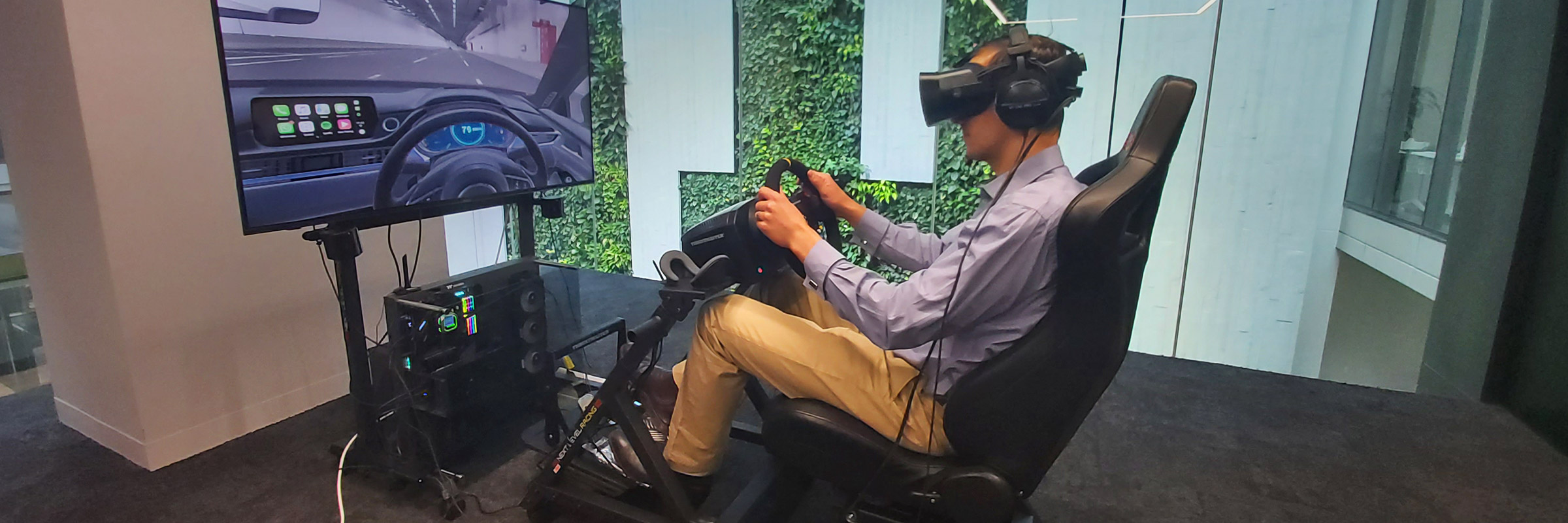
The innovative solution will give drivers a new-found confidence when commuting, by providing a peripheral pace reassurance, and removing bottlenecks towards the end of the tunnel.
Design to delivery
The SMEC team delivered a complete redesign of core operational and aesthetic elements of Citylink’s Burnley Tunnel in Melbourne, encompassing lighting, drainage, safety barriers and wall coatings as well as improvements to traffic performance and road safety, by installing innovative sensory lighting to influence human driver behaviour.
SMEC’s research in this field showed that traffic performance and road safety could be improved through targeted aesthetic upgrades including the provision of Australia’s first pacemaker lighting system. The system comprises LED lighting strips applied throughout the tunnel, and are programmed to project green bands, which travel along the tunnel at a specified speed, guiding the adjacent traffic.
This lighting solution will create greater control over driver behaviour will see a reduction in congestion and emissions, and a lower whole-life carbon-cost of the luminaires specified for the design. The project will open up significant global opportunity for other tunnels where traffic performance, road safety and emission levels can be substantially improved through aesthetic upgrades.
Road design and driver behaviour found to be intrinsically linked
During the investigation and concept design phases, SMEC proposed an innovative methodology, utilising a digital model of the Burnley Tunnel in Virtual Reality (VR) to examine potential changes to physical attributes and the impact on driver behaviour. Digital VR models were developed based on our specialist design advice, enabling the team to gather large data sets from the VR simulations, such as eye tracking and biometrics to gain a deeper understanding of driver behaviour.
To evaluate the redesign solutions, Transurban selected some of its customers to participate in a public testing trial of the VR models. Participants virtually drove through the tunnel in its previous form and again in a new model which illustrated different lighting, wall coating and the dynamic pacemaker lighting.
This methodology added significantly more value than a static digital model because it included a new dimension – providing a dynamic experience of the asset. This delivered increased value to clients seeking to measure outcomes prior to expensive design stages, which ultimately benefits the users who drive through the tunnel every day. The improvement options tested during the project were trialled to inform the performance specifications and detailed design for the end solution.
Sustainable community impacts
From a project delivery, cost and operational perspective, this pacemaker lighting system lowers the cost and carbon impact of the project itself, compared to other potential solutions. By reducing congestion, this solution also allows for a reduction in carbon emissions and improvement in air quality within the tunnel.
Majority of works were completed at night and on weekends to minimise disruptions during construction, ensuring continued functionality for regular commuters. This resulted in a smooth delivery of the tunnel enhancement over an accelerated period.
Since the tunnel’s inception over 20 years ago, constant optimisation of the tunnel is necessary to keep up to date with traffic increases. Applying digital engineering solutions such as these showcases a clear example of the cost and disruption savings creative engineering can have. Data from this upgrade will be able to suggest future areas for enhancement, and room for creative thinking, as Melbourne’s expansion continues.




